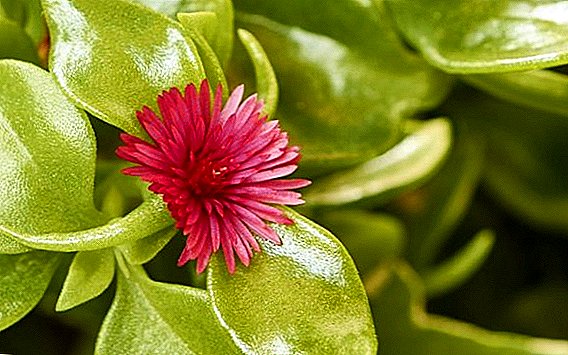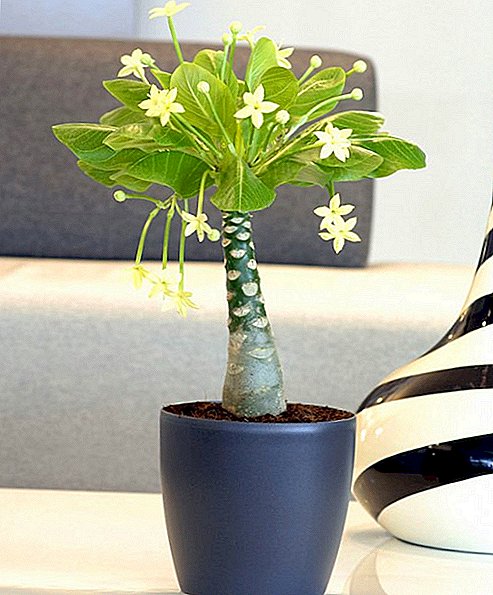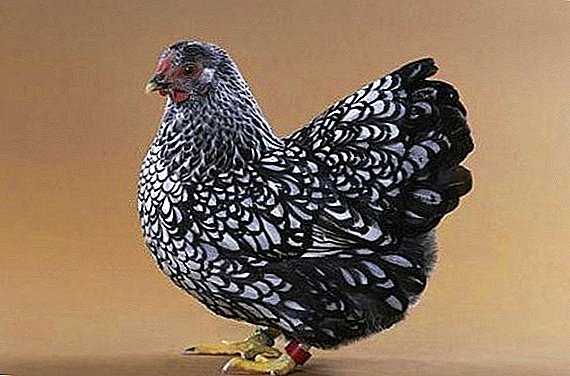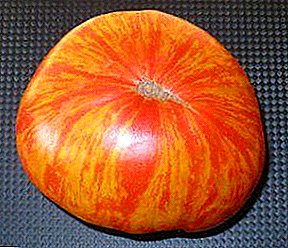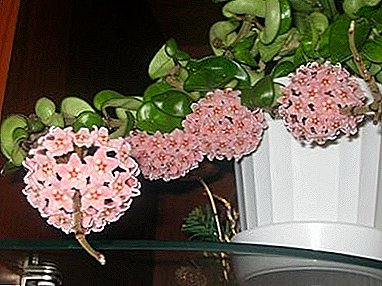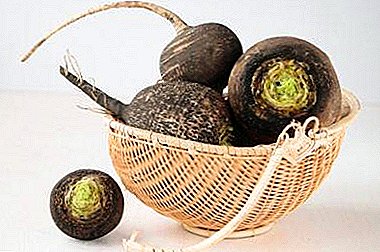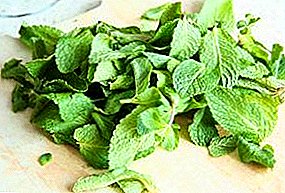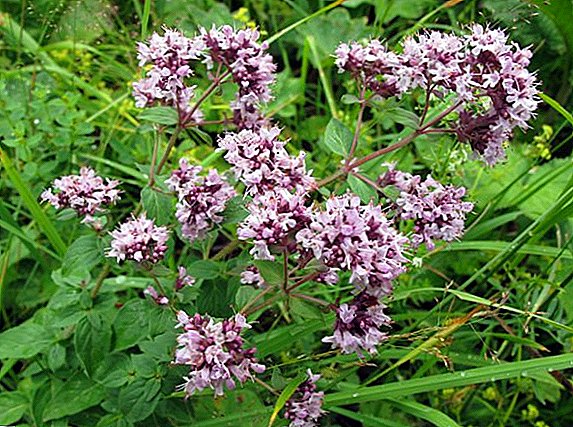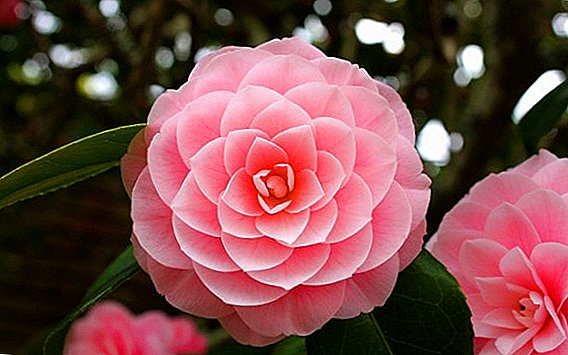 Camellia is an evergreen plant of the Tea family. The most common plant species is "Camellia sinensis", tea is made from its leaves. Most varieties of camellia have found use in ornamental gardening.
Camellia is an evergreen plant of the Tea family. The most common plant species is "Camellia sinensis", tea is made from its leaves. Most varieties of camellia have found use in ornamental gardening.
Did you know? Camellia is also called the Japanese rose.
Types of room camellia Camellia room is a shade-tolerant tall tree or shrub, which is almost completely covered with flowers. They have pointed shiny leaves of dark green color. In the sun, camellia leaves sparkle like sunbeams.
Important! Carefully handle the leaves of the plant: they are very sharp and you can cut yourself.
These Japanese home flowers are divided into the following varieties:
Mountain Camellia. The birthplace of this species of camellia is considered Fr. Okinawa. Shrubs of this species grow to 5 meters in height. On thin branches are located shoots pubescent with red hairs. The leaves are about 3 cm wide and reach 7 cm in length. The leaves are elliptical or oblong-ovate in shape, the underside is slightly pubescent, the upper is glossy, dark green. Flowers 7 cm in size have a magical aroma, grow 2-3 pieces of pink, white or red. This variety grows well in cool rooms. Blooms profusely from early November to late January.
 Japanese camellia. This species is widely distributed in Korean and Japanese forests. Shrubs and trees of the Japanese camellia grow to 15 meters in height. Pointed at the top and jagged at the edges, the leaves of dark green camellia are leathery to the touch and slightly glossy. The shape resembles an egg or an ellipse. Flowers 4 cm in length grow both singly and in pairs. The color of the flower is pink, white or red, there are also variegated leaves. Usually blooms from December to April. At home, prefers a fresh, slightly cool place.
Japanese camellia. This species is widely distributed in Korean and Japanese forests. Shrubs and trees of the Japanese camellia grow to 15 meters in height. Pointed at the top and jagged at the edges, the leaves of dark green camellia are leathery to the touch and slightly glossy. The shape resembles an egg or an ellipse. Flowers 4 cm in length grow both singly and in pairs. The color of the flower is pink, white or red, there are also variegated leaves. Usually blooms from December to April. At home, prefers a fresh, slightly cool place.
Chinese camellia. Growth area - mountain slopes, gorges and forests of China. Height of an adult plant reaches 155 meters. The leaves are 4 cm wide and 10 cm long, ovate and elliptical in shape. Young leaves have a bloom of white hairs, old leaves are bare. Chinese camellia likes cool rooms.
Comprehensive care for camellia at home
Camellia needs constant complex care. This will allow it to bloom longer and please the eye with its beauty.
The correct location and lighting
Camellia is considered a light-loving plant, it will be better to place it on the windows in the western or southern exposure. During the flowering period it is recommended not to move the pot with a flower, it is advisable to initially choose for him the place in which he will be constantly.
Did you know? Mountain Camellia tolerates bright sunshine, and the Japanese, on the contrary, prefer shadow.
Temperature and humidity
 The flower is very sensitive to draft and reacts poorly to sudden changes in temperature. In winter, the camellia should be on a glazed and insulated loggia, but the temperature should be around 12 ° C, since higher temperatures are detrimental to these colors.
The flower is very sensitive to draft and reacts poorly to sudden changes in temperature. In winter, the camellia should be on a glazed and insulated loggia, but the temperature should be around 12 ° C, since higher temperatures are detrimental to these colors.
Camellia loves moist air. It will be useful to put a container with water near the plant. It is necessary to constantly spray the leaves with soft water, but the water should not fall on the buds and flowers of the plant, this will lead to the fall of the bud and rotting flowers.
Watering and feeding the soil
The soil must be acidic. In order to achieve the necessary acid, soil disintegrating agents should be added to the soil: pine needles, perlite, finely chopped pine bark; besides, for good growth of camellia, drainage in the soil is vital. You can acidify the soil by adding lemon juice, oxalic acid and citric acid. The soil should be light and airy, this will help avoid stagnant water. You can buy ready-made soil on the basis of peat, this composition is also used for rhododendrons, azaleas, etc.
In summer time flower should often be watered with separated or filtered water at room temperature. In winter need to water less often. It is necessary to ensure that the plant does not dry out, but it does not over-wet. When flower buds are formed, it is necessary that the soil for camellia is slightly dried.
 In the spring, when the first young shoots begin to appear, you need to fertilize the camellia. For fertilizers, complex organic or mineral fertilizers are used especially for flowering plants. Throwing fertilizer in water, reduce the dosage twice from that indicated on the package. You do not need to feed the flower too often, and if the concentration of top dressing is high, then the camellia can die. At the end of August, fertilizing needs to be stopped, because at this time the budding is being laid.
In the spring, when the first young shoots begin to appear, you need to fertilize the camellia. For fertilizers, complex organic or mineral fertilizers are used especially for flowering plants. Throwing fertilizer in water, reduce the dosage twice from that indicated on the package. You do not need to feed the flower too often, and if the concentration of top dressing is high, then the camellia can die. At the end of August, fertilizing needs to be stopped, because at this time the budding is being laid.
Pruning and shaping the camellia crown
Cut camellia taken before her transplant, so that the roots of the transplanted flower could feed the plant on their own. Camellia is cut off after flowering, before spring growth begins. Most often, it is customary to cut a third of branches once every few years, but if there is a desire, you can cut 2/3 at once.
In addition, circumcision is used to thin the crown and stimulate the growth of the kidneys. Thanks to the circumcision, you can independently control the thickness of the flower. Mountain camellia can be cut without fear, but the net camellia should be cut delicately.
How and when to replant a flower
It is often necessary to transplant young plants, adult flowers are transplanted once every 4 years. As a matter of fact, the camellia is not transplanted, but literally transferred into a new pot. Pots for camellia need wide. Transplantation is done very carefully, it is important not to damage the root system of the flower. The root neck, which is located between the roots and the stem of the plant, should not be sprinkled with earth. It is necessary to replant a flower after completion of flowering. The first time after transplanting the flower should be sprayed every day.
Did you know? Sometimes it is recommended to replant the flower exactly when the camellia blooms, but in this case it is possible to harm the flowers.
Breeding methods of room camellia
Growing and caring for camellia in a pot begins with the proper propagation of the plant. There are two ways to propagate camellias:
Seeds
 Seed propagation is the most common way. Freshly harvested seeds are sown immediately, because they very quickly lose their “germination” because they contain a very large amount of oil. Seeds are sown in a mixture of sand and peat (1: 1). If you raise the temperature to 21 ° C, the germination rate of seedlings will increase significantly, given that their growth lasts from 2-3 weeks to one year. When there are two leaves on the sprout, sprouts are transplanted one by one in pots with a diameter of 10 cm.
Seed propagation is the most common way. Freshly harvested seeds are sown immediately, because they very quickly lose their “germination” because they contain a very large amount of oil. Seeds are sown in a mixture of sand and peat (1: 1). If you raise the temperature to 21 ° C, the germination rate of seedlings will increase significantly, given that their growth lasts from 2-3 weeks to one year. When there are two leaves on the sprout, sprouts are transplanted one by one in pots with a diameter of 10 cm.
Sprouted flowers grow faster and easily adapt to various adverse conditions. Some varieties of camellia may bloom in the third year after sowing.
Important!Usually camellia blooms after 6 years of growth..
Cuttings
Another method of breeding Camellia - reproduction cuttings. Let's see how to properly plant camellia with cuttings. The cuttings, ripened in the second half of summer, are cut with four developed leaves. They need to be immediately planted in sand or a mixture of peat land and sand (1: 1). The tip of the cutting is dipped in a phytohormone and trying to ensure maximum burntness of the lower soil. After that, you need to wait until the cutting takes root, it takes about two months. For reproduction, you need to take adult cuttings - young shoots are not suitable.
To make the flower bloom faster, the grafts are grafted onto plants that have grown from seeds. Graft plants for three weeks before the start of the spring growing season. The resulting sprout plentifully watered, then you need to reduce watering, it will help the ripening of wood.
Difficulties in cultivation, possible diseases and pests
 Knowing how to care for camellia, you should not have difficulties in growing. Especially because flower care is not complicated, although camellia requires patience and attention. The reward will serve you beautiful and bright flowers.
Knowing how to care for camellia, you should not have difficulties in growing. Especially because flower care is not complicated, although camellia requires patience and attention. The reward will serve you beautiful and bright flowers.
Camellia is affected by some pests. For example, due to various fungal diseases, black and gray spots appear on the petals. For treatment, you need to use fungicides, although it would be better to throw out the infected plant.
The flower is very susceptible to the mosaic virus. Because of it, leaf veins turn yellow in a flower.
Considerable harm brings the aphids and the scarlet. Feeding on vegetable juice, they secrete a pad, which develops a black fungus. To get rid of these pests, the flower is treated with a cotton swab dipped in alcohol or an insecticide.
The main problem of Camellia is a single scosar. Its larvae destroy the roots of the plant, and already adult beetles damage the root neck, because of which the flower dies. To recover from this scourge, use a solution of the corresponding drug - you need to moisten the soil.
Now you know how to grow a camellia. Take good care behind the flower and he will please you for a long time its bloom.


